Guide to the regional French pastries (part 1)
With more than 30,000 independent bakeries, France is home to an incredible variety of traditional pastries! Renowned culinary institutions like Ferrandi, Alain Ducasse, and Cordon Bleu are just a few examples of our rich gastronomic education.
If you’re pursuing studies in French gastronomy or dreaming of starting your own boulangerie-pâtisserie in France, I provide specialized French classes for professionals. We’ll cover essential vocabulary and expressions, enabling you to concentrate on flavors and creativity!
You may already enjoy Paris-Brest, Tarte Tatin, or éclairs but are you familiar with all our regional sweet specialties? From the delightful Merveilleux to the fruity Bourdelot, we’ll journey through different French regions to uncover the most intricate and delicious baked goods. Today, we’ll explore treats from four Northern and Central regions :
- Bretagne
- Normandie
- Haut-de-France
- Grand-Est
- Ile-de-France
- Centre-Val de Loire
- Bourgogne-Franche Comté
- Pays de la Loire
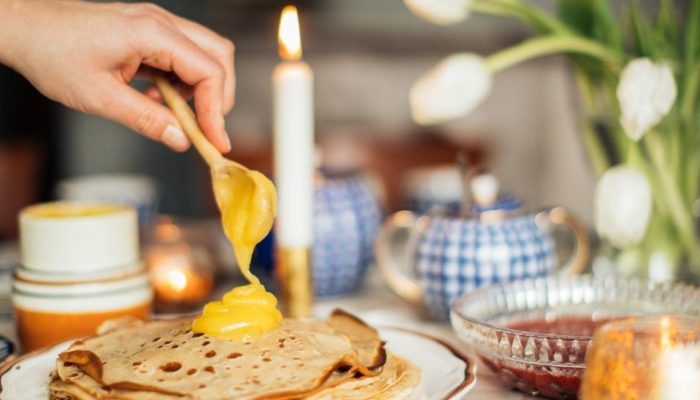
Breton pastries
Le kouign-amann
The kouign-amann may be rustic and quite simple but it remains one of the stars of Breton bakeries ! We regularly joke saying that it’s a source of regular income for all French dieticians… People loves kouign-amann because almost everyone loves butter and sugar, the two main ingredients in this rich pastry. According to the legend, the kouign-amann was created by chance, in a bakery in the Douarnenez region, following a shortage of flour. The recipe quickly went around the world and is now a safe bet in French bakeries.
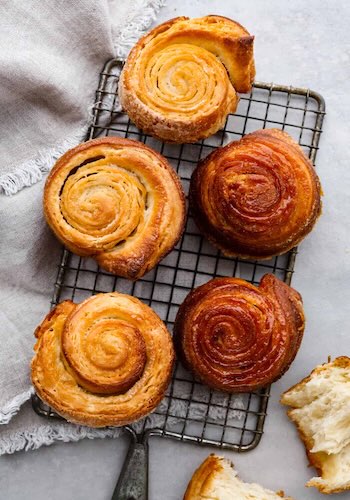
Le far breton
Quickly prepared, with milk, sugar, flour and eggs, it is very nutritious. Far is a custardy pudding cake, similar to a clafouti but with a dense, smooth, flan-like texture. Brandy-soaked prunes or raisins are common additions to this signature pastry of Brittany. However, you can find some nature or with apples too. Breton far is perfect for those gruelling winter days, served mainly for dessert and sometimes for breakfast ! Its origin is uncertain, but it is undoubtedly popular by many French people.
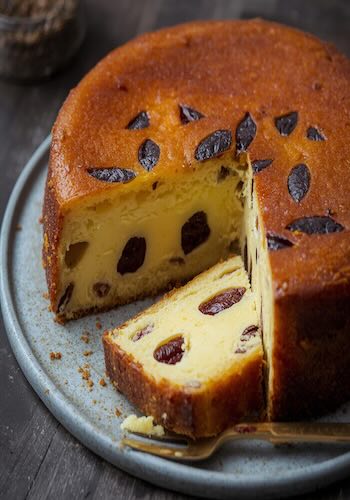
Les crêpes
Who has never cooked crêpes ? With wheat or buckwheat flour (for the famous crêpes bretonnes), milk, beer or water, eggs (or not), the crêpes can be customized as you wish. Sweet or savory, plain or garnished, with many toppings (chocolate, caramel, apples, bananas,..), endless recipes are available to you !
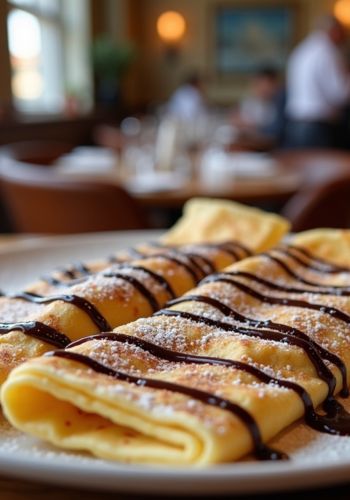
Normandy pastries
La teurgoule
Do you know the teurgoule? This traditional Norman recipe is actually very close to a rice pudding. A good dessert, very simple to make, which will only require 10 minutes of preparation time in the kitchen. Cooking takes a little longer (over 4 hours in the oven), but the result is even better ! La Teurgoule will delight you for afternoon tea or dessert. To be served cold or warm. It is originally made with cinnamon, but can also be made with vanilla if you prefer.
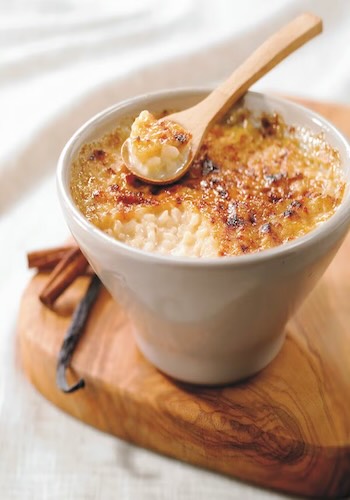
Le bourdelot
Here is another very Norman dessert, attested throughout the region. According to old glossaries published in the 19th century, “bourde” means several fruits cooked under a layer of dough, while “bourdelot” designates a single pear or apple cooked in the same way.The farmers used to cook bourdelots in the oven which each farm had. They were put in the oven before or after the bread. They were served as a treat for a ten-hour snack (called a dixeu), which was out of the ordinary. This simple dessert is pleasant, and nourishing. They were traditionally prepared identically for apple or pear.
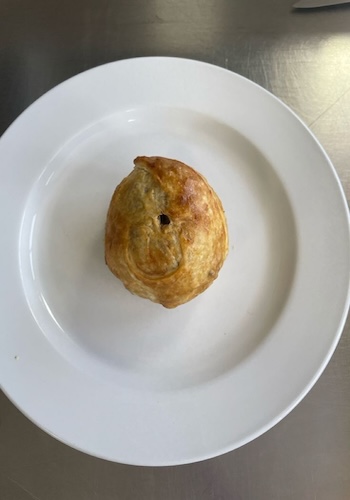
La tarte normande
The Norman tart is traditionally composed of a shortcrust pastry, apples and a cream composed of crème fraiche, Calvados, egg and sugar. In short, everything that makes Normandy so charming!A little cinnamon is often added to it, but you don’t have to if you don’t like it.
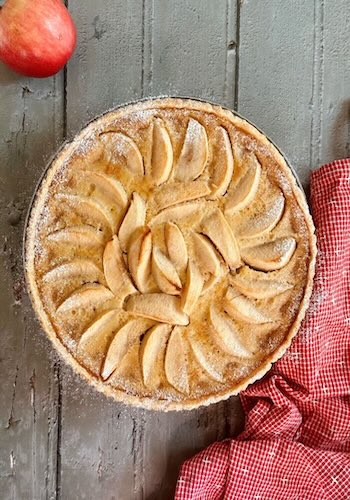
Haut-de-France pastries
La tarte au sucre
It is called a tart when it is more of a super soft brioche ! The real Nord-pas-de -Calais sugar pie is only garnished with knobs of butter placed in the small holes and generously sprinkled with brown sugar to caramelize on the surface. In no case do we put it on top of cream and egg ! (In this case you are therefore getting closer to an Ardennes pancake). It is served as a dessert, as a snack or even for breakfast. Simple to make and always appreciated, the sugar pie, which you can hear pronounced “Tarte au chuc” in the North, is airy on the inside and crispy on the outside. It is a real wonder of sweetness, gluttony and comfort.
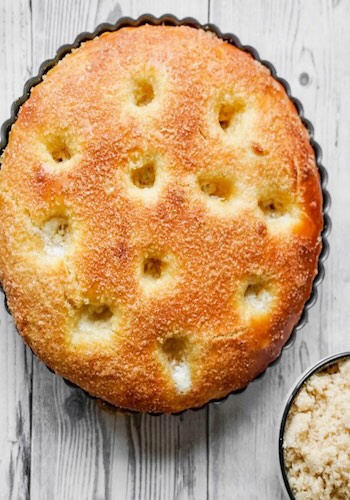
La gauffre vergoise
This oval-shaped waffle is split in half to be filled with brown sugar (vergeoise) or vanilla. These two versions are the best known. The filled vanilla waffle was created by the Meert house around 1949. Since then, the filled waffle has been a real institution in the north of France (Hauts-de-France). You can now also taste them in different original flavors such as speculoos, raspberries or even pistachio.
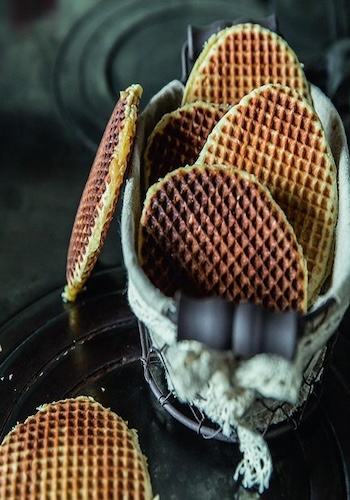
Le merveilleux
It was born, perhaps in the 19th century, between Belgium and the north of France, let’s say Flanders to clear up any controversy ! Merveilleux is so…marvellous that you have boutiques that sell only this pastry (Aux Merveilleux, Au Merveilleux de Fred). It punctuates the Sunday meal, weddings or birthdays. It is a traditional pastry of absolute lightness, composed of a meringue and cream and wrapped in chocolate shavings.
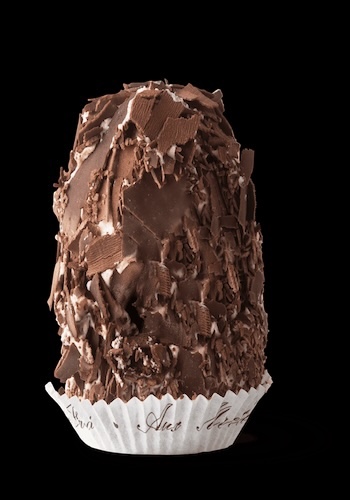
If you’d like to feel at ease communicating with natives during your trip to France, why not try a bespoke French lesson ? With empathy and efficiency, Agnes, your private tutor, will make sure you have the best stay in our capital of love and croissants !
Grand Est pastries
Le kouglof
Also present on German, Austrian or even Czech tables, the kouglof (Bundt cake) is an Alsatian brioche recognizable by its high shape, fluted and empty in the middle. Although there are different variations (sweet and savory), the most common recipe is that with raisins soaked in rum or kirsch and almonds. All generously dusted with icing sugar … We’re already licking our chops!As for the recipe, it will be necessary above all to obtain first, a kouglof mold, a precious object that every Alsatian has in his cupboards.
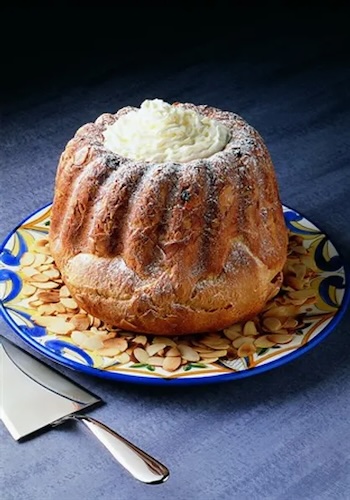
Le pain d’épices d’Alsace
The choice of top-quality honey, a subtle balance between 7 spices whose list is kept secret : this is what gives a good gingerbread its inimitable taste. Since antiquity, we appreciate the fragrant flavours of gingerbread. From the 10th century, the Chinese were fond of Mi-Kong (“honey bread”), a specialty made from wheat flour, honey, flavoured with aromatic plants.
Then, it was the Crusaders who would have brought back to Europe the secret of this so special bread. The recipe was borrowed from the Chinese by the Arabs. We had to wait for the spice route to bring us ginger, cinnamon, star anise,… to finally savour the current recipe.
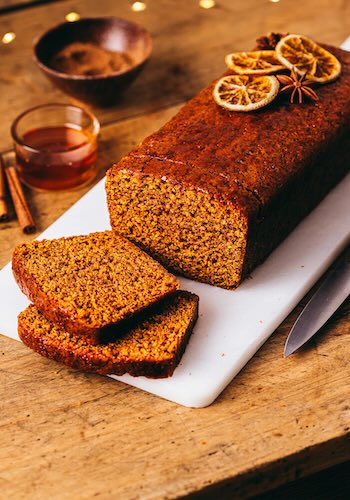
Ile-de-France pastries
Le Paris-Brest
Paris-Brest was a railway line whose construction began in 1840, but also a very famous bicycle race: the Paris-Brest ! This desert was imagined by Pierre Giffard, editor-in-chief of the Petit Journal (a Parisian daily newspaper) and pioneer of the sports press. The bicycle race going from Paris to Brest and returning to Paris was inaugurated in 1891. To promote it, Pierre Giffard then asked a certain Louis Durand, pastry chef from Maisons-Laffitte, to imagine a dessert to represent the event.
“Paris-Brest” was born in 1909. It is composed of a crown of choux pastry filled with a praline mousseline cream, sprinkled with slivered almonds.
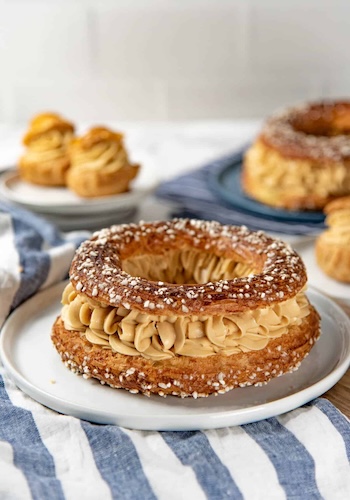
Le flan parisien
This is my favourite dessert (yes, simplicity is delicious J). The flan is a dessert made from pastry cream on a bed of puff pastry or shortcrust pastry is a simple pastry to make. It can be found in different variations that vary from one country to another: pastel de nata in Portugal, dan-tà in China and custard tart in Great Britain. A pastry of childish simplicity in its composition, which delights everyone with its creamy consistency and its taste of vanilla. Unfortunately it has become very fashionable for a few in Paris and can now cost over 5 euros in some patisseries in Paris !
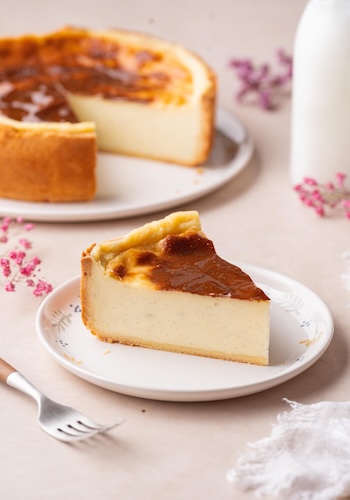
La religieuse
This traditional cake made up of choux pastry, pastry cream, buttercream and icing has been neglected over the years over éclairs which have taken over the market for these pastries (which are almost identical in their compositions). La religieuse is so named because the color of the choux was reminiscent of the dress of the nuns of the convents. It is the Signor Frascati, an ice cream parlor from Naples, who offers this sweet treat in his Parisian café in 1856. And the success never left. Traditionally with chocolate or café, you can also find some with caramel-salted butter, pistachio-raspberry or chocolate-coconut in original bakeries.
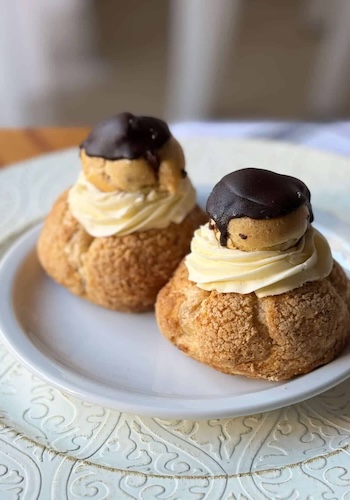
Centre-Val de Loire pastries
Le pithiviers
Originally from the commune of the same name in Loiret, Pithiviers in its most popular form consists of a puff pastry and a filling made from almond cream. Its creation dates back to the 17th century. Served warm, this slightly choking-Christian dessert can be covered with icing or some candied fruit, depending on the creativity of the pastry chef. The Pithiviers is garnished with almond cream only, and not with frangipane. It is made of almond cream and custard (crème pâtissière) and above all, it does not contain a trinket.
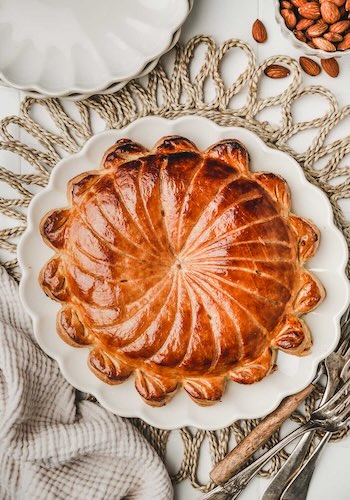
Les Pets de nonne (Nun’s puffs / nun’s farts)
The ancestor of the pets de nonne appears to be a classic donut used for Roman meals. But why this name ? At first, it was just pieces of dough that were dropped into hot oil. According to legend, a nun living at the Abbey of Marmoutier farted in the kitchen while a feast was being prepared. The other nuns laughed, as they dropped a spoonful of choux pastry into a container of hot oil. Thus, this type of donut was born in France, light as a breath that some prefer to call “wind donut” or “nun’s sigh”.
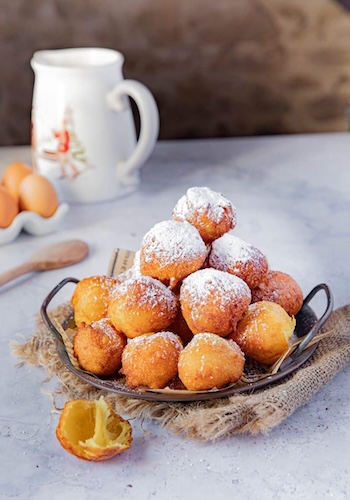
La tarte tatin
Large pieces of tender and caramelized apples, a light puff pastry or a crispy shortbread, this easy tarte tatin recipe is a killer! You can make it in a stainless steel frying pan that goes in the oven, it’s convenient, 20 minutes of preparation, 30 minutes of cooking and we serve it hot with a scoop of vanilla ice cream or whipped cream, the best!
Tarte Tatin is named after the Tatin sisters (Caroline and Stéphanie) who ran a hotel-restaurant at the end of the 19th century in Sologne. Conflicting versions state that this irresistible dessert was created by accident (they dropped the tart on the floor and baked it upside down), by a simple oversight (they left baked apples in the oven for too long) or was simply an old local speciality made famous by the sisters.
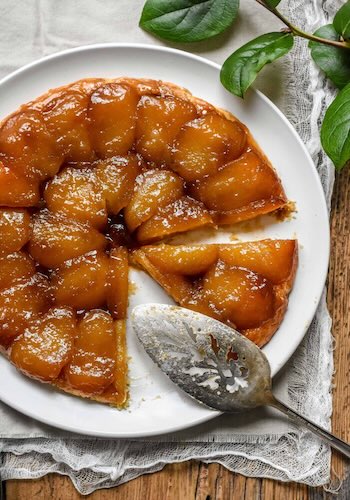
Bourgogne - Franche Comté pastries
Les nonnettes
This small cake from Dijon owes its name to the nuns who made it in their monastery in the Middle Ages. Its popularity has never wavered since. If you’re in Burgundy, don’t forget to bite with appetite in this pastry made with gingerbread, orange marmalade and honey. Moment of sweetness guaranteed
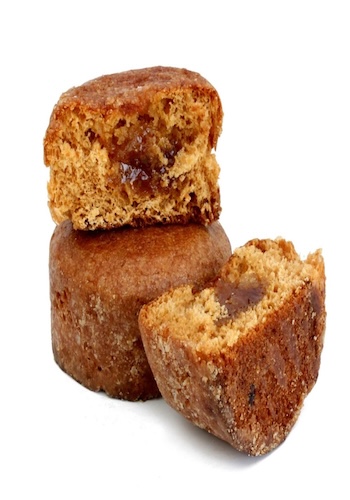
La tarte aux myrtilles
A specialty of the Vosges Mountains, the tart with brimbelles (in the local dialect, blueberries) is the favorite pastry of the North of Franche-Comté.Prepared with a shortbread, cream and sometimes almond powder, the blueberry tart is ideal to be prepared with good fresh blueberries. However, if it’s not in season or if you don’t have any, you can use frozen blueberries.
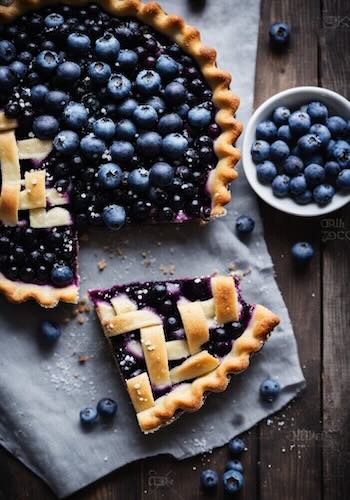
Le gâteau de ménage or Toutché
If you stop over in Franche-Comté, I suggest you taste a Toutché, a delicious brioche leavened cake on which a mixture of cream and eggs is poured, the goumeau.This Franche-Comté specialty also bears the name of gateau de ménage (household cake) or gâteau de fête (festive cake) in the regional dialect… Toutché is very often found in a sweet version but sometimes also in a savory version, with salt replacing the sugar in the goumeau.
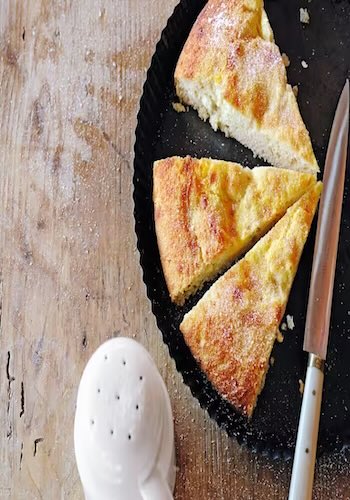
Pays de Loire pastries
Le gâteau Nantais
The Nantes cake is one of the favorite desserts of the habitants of the city of the Dukes (Nantes). Yet its ingredients refer to dark and controversial pages of its history. To start with, Nantes cake is a pound cake made with flour, sugar, eggs, butter and almond powder. But the pound cake is of Breton origin, which does not go without posing some problems of conscience for the people of Nantes.
On a more serious note, the taste of Nantes cake comes not only from its almond powder and icing but also in majority from the West Indian rum which soaks the cake. The recipe for Nantes cake, born around 1820, is therefore closely linked to its strong involvement in the triangular trade.
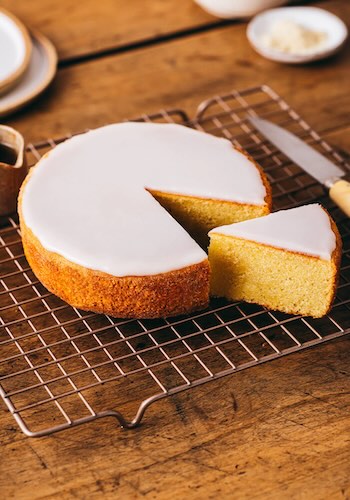
Les bottereaux
Bottereaux are small donuts mainly consumed in Anjou, Brittany and Vendée. Diamond-shaped, bottereaux, whose name is undoubtedly derived from “butter”, are most often eaten cold or warm, sweet and plain. You can, however, find savory ones and others filled with chocolate or jam. Les Bottereaux are seasonal pastries that are eaten especially at candlelight, instead of traditional crêpes. In fact, the ingredients in this recipe are the same as the crêpes.
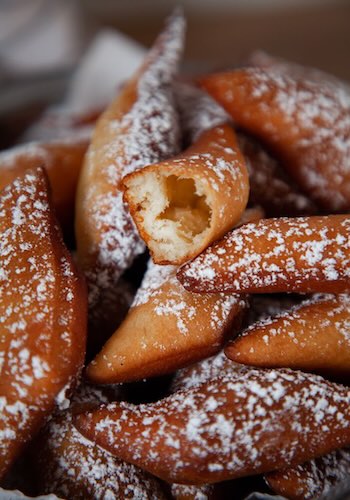
La gâche vendéenne
In the Middle Age, each Vendée family made its own gâche for Easter. When the first bakers settled in the region around the 19th century, they decided to modify the traditional recipe by adding butter flavored with orange blossom, or brandy or sometimes creams. The brioches were made with a well ventilated crumb. This improved brioche was considered a party cake. During weddings or dance festivals, we can find brioches that weigh from 10 to 20 kgs, brought on a stretcher … Since 1949, a Brioche Vendéenne label has been created to avoid confusion between the brioche from Paris and the one from Vendée.
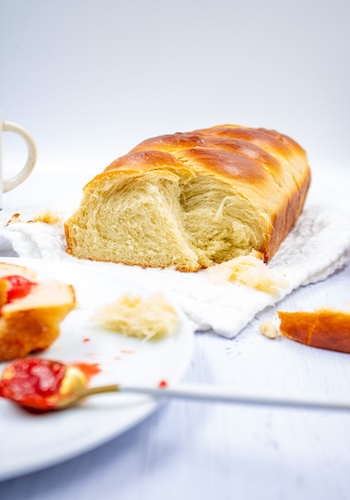
Are you interested in exploring the world of French pastries or diving into French culture? Do you dream of visiting France and improving your communication skills? I would be thrilled to hear from you! Don’t hesitate to get in touch through email, phone, or my contact page. And don’t forget to check out the part 2 of these delicious French pastries guide. See you soon! A bientôt!

Comments are closed.